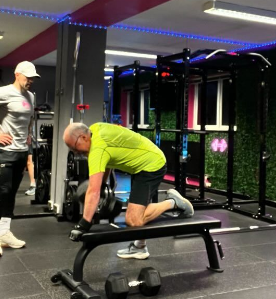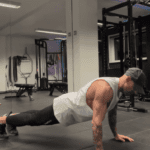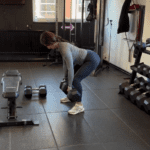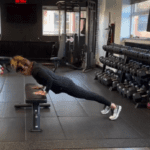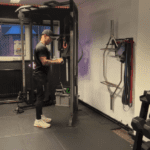To stay fit at 60, it is recommended to incorporate a variety of exercises into your routine, and you should aim for at least 2.5 hours of moderate aerobic exercise such as brisk walking, or alternatively, 1 hr 15 mins of vigorous exercise like jogging each week. Strength training should also be incorporated at least 2x days a week, while balance and flexibility can be done daily. It is essential to include a range of exercises such as endurance (cardio), as well as strength training, balance and flexibility to reap the full benefits of physical activity. It is important to reduce sedentary time and break up long periods of inactivity with some form of movement. It would be recommended to start with basic exercises and gradually progress to higher intensity workouts with proper form and technique under the guidance of a qualified trainer.
Some key exercise to incorporate into your routine would include squats, lunges, deadlifts, step-ups, pull-ups, push-ups, rows and planks; these would focus on improving posture, strength, balance and core stability. Additionally, starting with activities that feel right for you, and gradually increasing the intensity can help you maintain fitness levels as you age. It is vital to engage in weight-bearing exercises to improve bone health and prevent issues like kyphosis (a weakness in the spinal bones that can lead to a rounding of the upper back).
A suggested exercise regime could be:
- Squats: 8-12 reps and 3 sets to improve leg strength and flexibility.
- Push-ups: 8-12 reps and 3 sets to maintain shoulder movement and posture.
- Lunges: 8-12 reps each side and 3 sets for leg strength and balance.
- Pull-ups: 8-12 reps and 3 sets to retract shoulders and improve posture.
- Plank: 45 second holds and 3 sets to work on core stability and balance.
These exercises focus on building strength without excessive stress on joints or ligaments. It is essential to gradually increase weights and sets as you progress in your training program to continue to reap the benefits of training at an older age.
Regular physical activity can also help combat the effects of aging on the body, such as decreased muscle mass and changes in metabolism. Strength training can bring numerous benefits, not only physical but also in your health as it can be a preventative or help delay chronic conditions like heart disease, diabetes, and osteoporosis, as well as reducing the risk of falls and having stronger bones which will reduce stiffness and discomfort in joints and muscles. Some studies suggest that exercise may also improve cognitive function in older adults, potentially reducing the risk of conditions like dementia. In addition, exercise has been shown to improve your mood, helps fight off depression and overall mental wellbeing.
Remember that staying active and incorporating enjoyable physical activities into your routine can have significant benefits on your overall health and wellbeing; starting slow, setting specific goals and making gradual progress are key strategies to maintain fitness over 60.
Please seek advice from a healthcare provider, or fitness professional before starting a new exercise regime, especially if you have not been active for a while.
A personal trainer is an investment in your health and well-being that can lead to long-term positive effects on your fitness, confidence, and overall health. PT Hale prides itself on being a social and safe space where you can workout individually, or with like-minded people to get the results that you want and deserve – LET’S GO!

